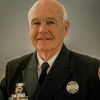Many books on leadership indicate that it takes a different type of leadership to reach every new generation of the workforce. There is no doubt that each generation has different motivations to work and perhaps different expectations to take from work.
But the common thread among all those currently serving in the fire service — from baby boomers to generation next — is the camaraderie found in the fire service and the satisfaction of being a part of an organization designed to help others.
How do you as their leader cut across all four generations? Practically speaking, the best characteristic admired by firefighters of all age groups is to be genuine — no pomp, no glitz, just genuine concern for your people, their families, and your community.
No leader knows everything about everything. Only someone foolish would even think that. So the smart and genuine leader surrounds him or herself with competent people who can give solid advice while sharing the same values, vision and direction for the department.
Some of these shared values should include what the leader believes is most important in life. That can be family, country, community, conscience, consistence, and perhaps hardest of all, a moral compass to choose what is right, despite the cost to oneself, over what may be convenient at the time.
Learn from mistakes
Genuine leaders have also learned from their own mistakes and in doing so create an atmosphere in the department where mistakes become learning experiences. With the leader’s permission, individuals should have the ability to try new ideas on a smaller scale to see if they would work within the department.
For example, it may be desirable to standardize fire nozzles on all engine companies in a department. The best way to experiment would be to compare demonstration nozzles side by side from several vendors, and then seek input from all the interested firefighters.
This could also apply to new concepts in training. Better to experiment on the training ground than foul up on an actual emergency scene.
But even if things don’t go as smoothly as you’d want on an incident, the leader needs to take this as an opportunity to demonstrate the need for further training in the department.
Throughout my career as a chief officer, my firefighters knew that when debriefing the crews after a major incident, I start by saying, “Did the fire go out? Were there any major injuries? Did we cause any undo damage? If not, then any mistake we’ve made will help us become better trained.”
Circle of safety
Genuine also means that the leader creates what the author Simon Sinek calls a circle of safety. That is an environment, even in highly dangerous fire situations, where a member can feel safe because they work within a team where they know that every member is looking out for the safety of every member, not just themselves.
While we didn’t call it a circle of safety, I learned this strategy early in my adult life. As a young commissioned military officer, I was had a master sergeant who had been around the block on several tours in hostile areas.
He knew what it took to keep a unit safe and secure. He taught me how to build an environment where the team felt safe because we trusted one another.
He also taught me that while rank indicated that as an officer I could go ahead of my troops for food, shelter and other necessities, that a good officer first took care of his troops.
For the leader, that meant working longer and harder hours to be better informed and then passing that information on to the group. It meant not asking them to do something that you wouldn’t or couldn’t do.
And most importantly, it meant that you looked after them as your extended family — sharing the team’s successes and taking responsibility when they fell short of the intended goal.
Pyramid of needs
Without knowing it at the time, what I was being taught was Abraham Maslow’s theory of human motivation. Maslow’s hierarchy of needs as it is now called consists of a pyramid with five distinct layers.
The most basic needs, thus the bottom layer is physiological — breathing, food, water, shelter and sleep. The second level is safety — security for the individual, the family, as well as your health and employment.
The mid level is belonging — friendship, love and companionship. The fourth level is esteem — meaning self-esteem, self-confidence, respect for others and respect shown by others. Maslow’s highest level is self-actualization — a feeling of being your best at what you do, including creativity, morality and acceptance of your life achievements.
The question is: how do you match up to being a genuine leader, and how does your department think its needs are being met?
Remember, while no one is perfect, leadership requires that you always try to bring your A game. People are not born leaders — it is something you learn, work hard to achieve and is granted to you by those you lead.
Let me conclude by offering you a brief video taken at the 2014 commencement speech at the University of Texas. The commencement speaker is Admiral William H. McRaven, the leader of the Combined Special Forces Units of the Army, Navy and Air Force. In his speech, he tells the UT graduates how they can literally change the world.
If you are or strive to be a leader, it is well worth your time.



